当前位置:网站首页>Deformable convolutional dense network for enhancing compressed video quality
Deformable convolutional dense network for enhancing compressed video quality
2022-07-07 14:48:00 【mytzs123】
DEFORMABLE CONVOLUTION DENSE NETWORK FOR COMPRESSED VIDEO QUALITY
ENHANCEMENT
ABSTRACT
Different from traditional video quality enhancement , The goal of compressed video quality enhancement is to reduce the artifacts caused by video compression . The existing multi frame compressed video quality enhancement methods rely heavily on optical flow , Low efficiency , Limited performance . This paper presents a multi frame residual dense network with deformable convolution (MRDN), Improve the quality of compressed video by using high-quality frames to compensate low-quality frames . say concretely , The network is developed by motion compensation (MC) Module and quality enhancement (QE) Module composition , It is used to compensate and enhance the quality of input frames . Besides , A new edge enhancement loss is carried out on the enhanced frame , To enhance the edge structure during training . Last , The experimental results on the public benchmark show that , Our method is superior to the most advanced compressed video quality enhancement method .
1. INTRODUCTION
In order to reduce the required bandwidth and storage space , Video compression algorithms are widely used in many practical applications [1], But these algorithms also bring the problem of video quality degradation . therefore , How to improve the quality of compressed video is a common concern of the research community and the industry . As an important method to reduce compression artifacts , Compressed video quality enhancement includes the elimination of blocking effects 、 Reduce edges / Texture floating as well as noise from mosquitoes ( Uneven or rocking motion is sensed due to frame sampling ) And the technology of reconstructing video in jitter [2]. However , Because details are lost during compression , Therefore, it is a challenge to reconstruct high-quality frames from distorted frames .
lately , Many enhanced compressed images have been proposed / Video quality methods , Especially with the help of deep learning [3、4、5]. Early methods [5、6、7、8] Enhance each frame independently , These methods are simple , But the details of adjacent frames cannot be used . In order to use time information , Yang et al [9] Firstly, a multi frame strategy for compressed video quality enhancement is proposed . From then on , Guan et al [10] The method is further developed by refining key modules . However , Because the video content is compressed, artifacts are seriously distorted , The optical flow method used in most existing multi frame based methods is not reliable . therefore , Enhanced video is far from satisfactory .
Compared with predicting optical flow at the pixel level , Extracting features in the receiving field can enhance the quality of compressed video more robustly . Based on this idea , We propose a multi frame network with deformable convolution [11,12], To realize the motion compensation of multiple moving objects . say concretely , And the traditional deformable convolution network used in video tasks [13、14、15] Different , We develop a new pyramid shaped deformable structure to extract multi-scale alignment information , A new constraint is added to reduce the noise in the reference frame .
Besides , Application of residual dense network in image super-resolution task [16], We have developed a new dense connection network with residual blocks , be called MRDN, To further improve the ability of extracting more hierarchical features , So as to achieve better compressed video quality enhancement . Besides , Through the analysis of compressed video , We find that the quality degradation of compressed video usually occurs at the edge of the object in the video . therefore , An edge enhancement loss is designed , Make the network pay more attention to edge reconstruction
The main contributions of this paper are as follows :(1) A new compressed video quality enhancement method is proposed . This method develops a new pyramid deformation structure with effective motion compensation constraints , And use the remaining dense network to improve the quality ;(2) By analyzing the reasons for the decline of compressed video quality , We have developed a new loss Algorithm to improve the performance of edge reconstruction ;(3) We evaluate this method on the compressed video quality enhancement benchmark database , And achieve the most advanced performance .
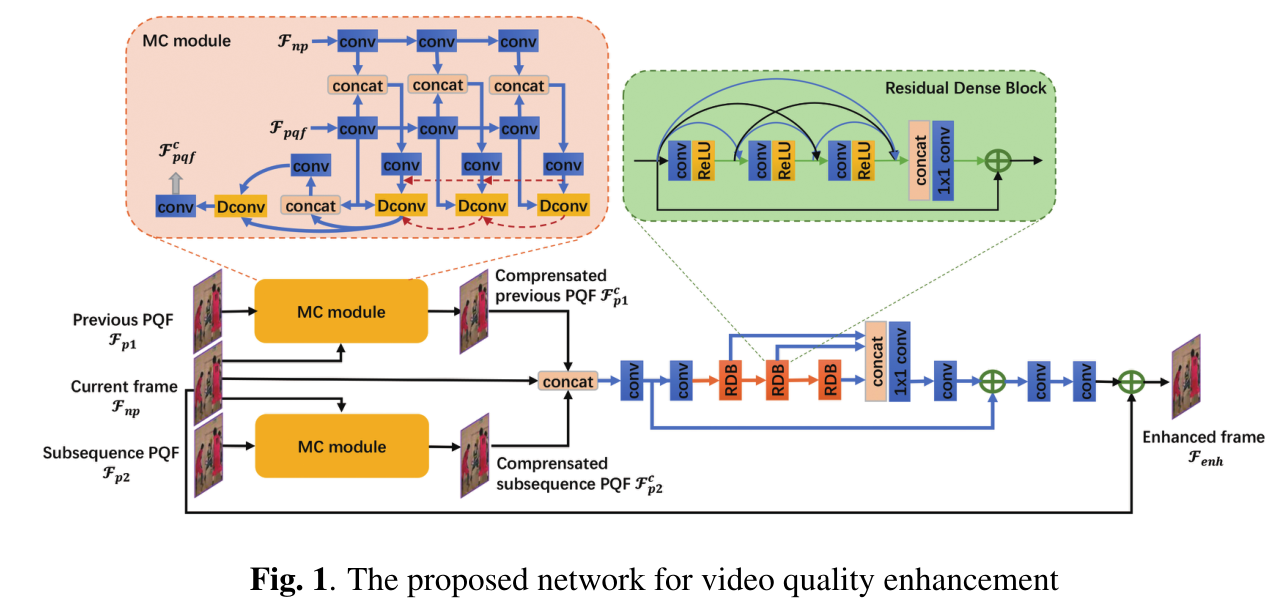
2. THE PROPOSED SYSTEM
2.1. Overview
Different from traditional video quality enhancement , The goal of compressed video enhancement is to reduce or eliminate artifacts and blurring caused by video compression . So , suffer [9] Inspired by the , We propose a method that can utilize peak quality frames (PQF) Multi frame network ∗ therefore , To compensate for low quality frames , Improve the quality of compressed video . Pictured 1 Shown , The network was developed by MC Module and QE Module composition . set up Fnp Represents the current frame ,Fp1 and Fp2 They are the latest previous and subsequent PQF. With PQF(Fp1 or Fp2) Is the reference frame , Based on deformable convolution MC Module to predict time movement , And input frame Fnp Make more detailed compensation . And then , Concatenate the compensated frames into QE Module input , The development of this module aims to further improve the quality of frames . Last , A new edge enhancement loss is carried out on the enhanced frame , To enhance the edge structure during training . Our new MC、QE And edge enhancement loss are described in the following chapters .
2.2. MC module
For the traditional deformable convolutional network in video related tasks , Most learn the offset on the reference frame δ, Then deformable convolution is used to extract the alignment features on the current frame . Obtained with N Pixel alignment feature Fa Defined as :

among F Is the feature of the current frame , In this article, it is defined as Fnp.pi yes F No i A place ,K It's the size of the convolution kernel ,wk It's No K Weight of positions ,pk It's No k Pre specified offset of positions . for example ,pk∈ (−1.−1), (−1, 0), . . . , (1,1) about K=3.
Considering that there are usually multiple moving objects on the frame at the same time , We construct a pyramid structure from multiple deformable convolutions , To extract multi-scale alignment features , And enhance information interaction through cascading . say concretely , The deformable structures of pyramids are 3 layer , Each layer extracts aligned features from the input at different resolutions . The deeper the layer is , The smaller the input resolution . meanwhile , By cascading , The first l Layer offset  And alignment features
And alignment features  And the next level
And the next level  and
and  Merge . Alignment features can be defined as :
Merge . Alignment features can be defined as :

f、 g and h Is to use ReLU Active nonlinear transformation layer , and (·)↑s By factor s Up sampling . In this paper s by 2. Last , Use another convolution layer to predict the compensation frame on the alignment feature .
2.3. QE module
After receiving compensation PQFs( and
and  ) after , need QE The module fuses the information between the compensation frame and the current frame , Further improve the quality of the current frame . In order to improve the QE Long term memory ability of the module , We use parameters
) after , need QE The module fuses the information between the compensation frame and the current frame , Further improve the quality of the current frame . In order to improve the QE Long term memory ability of the module , We use parameters  To extract more hierarchical features . The QE The module concatenates the compensation frame and the current frame as input , Then output the residue
To extract more hierarchical features . The QE The module concatenates the compensation frame and the current frame as input , Then output the residue  . By adding this residual to the current frame , Higher quality frames can be generated
. By adding this residual to the current frame , Higher quality frames can be generated  :
:
![]()
2.4. Loss functions
Edge enhancement loss: In compressed video quality enhancement , Mean square error (MSE) Widely used . However ,MSE Loss can not guide the network to improve the quality of the edge of the object . In order to make the network pay more attention to edge reconstruction , We propose an edge enhancement loss . Given contains N Enhanced frame of pixels  And its corresponding original frame
And its corresponding original frame  , The edge enhancement loss between them is defined as :
, The edge enhancement loss between them is defined as :

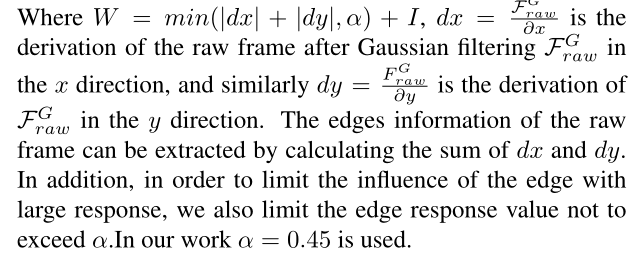
Total Loss:
Different from other video tasks , Compressed video quality enhancement tasks are very sensitive to noise . therefore , We not only optimized qe Parameters of the module θqe, Also on the mc Parameters of the module θmc Added constraints . say concretely , about MC modular , The compensation frame not only needs to provide the alignment result , It should also be preserved with the original frame Fraw Similar quality . about QE modular , Enhanced frame Fenh The quality requirements are as high as the original frame . therefore , The total loss is defined as :

3. EXPERIMENT
3.1. Datasets
In order to train the proposed model , Take advantage of Guan Etc [10]. The database is from Xiph.org Selected in the dataset 160 Composed of uncompressed videos .VGEG And video coding team (JCT-VC)[17], among 106 A video for training . For testing , The proposed model is 18 A standard test video [18] Assessment was carried out on , These videos are collected from JCT-VC, Widely used in video quality evaluation . The above videos are HM 16.5 stay LDP Compress in mode , use 4 Different species QP, namely 22、27、32、37.
3.2. Implementation Details
In the process of training , We use compressed frames and their previous and subsequent PQF As input frame , Then these frames are randomly cropped into 64x64 block . then , Use Adam Optimizer [19] Optimization model , The initial learning rate is 1e-4, The batch size is set to 16. Besides , During training , The loss weights of the motion compensation module and the mass enhancement module are set to 1 and 0.001. stay 100000 After iterations , The weight loss of these two modules will be changed to 0.001 and 1. Be careful , We are QP 22、27、32 and 37 Trained four models . Besides , In order to compare the experimental results more clearly , According to the incremental peak signal-to-noise ratio ( PSNR) And structural similarity (
PSNR) And structural similarity ( SSIM) Evaluated our method of comparison , These methods measure the difference between the enhanced frame and the original frame PSNR and SSIM Bad .
SSIM) Evaluated our method of comparison , These methods measure the difference between the enhanced frame and the original frame PSNR and SSIM Bad .
3.3. Comparison with state of the art
Quantitative comparison . We compare the proposed method with five most advanced methods ,4PSSNR and 4SSIM Results such as table 1 Shown . In the method of comparison ,ARCNN[5]、DnCNN[6] and RNAN[7] It is a method for quality enhancement of compressed images , They enhance each frame independently , And the performance is limited .MFQE 1.0[9] Put forward a new strategy , That is, search near the current frame PQF, And extract more information from multiple frames . stay MFQE 1.0 On the basis of ,MFQE 2.0[10] By using better PQF Detector and QE modular , Further improved performance . In our work , An effective pyramid shaped deformable structure and residual dense network are developed for multi frame strategy . It can be seen that , Compared with the other five methods , This method achieves better  PSNR and
PSNR and  SSIM. what's more , about QP 37, We are relative to MFQE 2.0 The improvement is MFQE 2.0 be relative to to MFQE 1.0 Twice as many .
SSIM. what's more , about QP 37, We are relative to MFQE 2.0 The improvement is MFQE 2.0 be relative to to MFQE 1.0 Twice as many .
Qualitative comparison:
chart 2 Shows 5 Qualitative comparison of two methods , Obviously , The proposed method can provide higher quality enhanced frames . In an effort to 2 Ball in 、 Take umbrellas and mouths for example , Our method restores clearer object edges and more details . It turns out that , For fast moving objects in video ( Like a ball ), Our pyramid deformation structure can compensate motion more accurately , And in effect QE Under the guidance of module and edge enhancement loss , This model has better performance in object edge reconstruction and detail supplement .

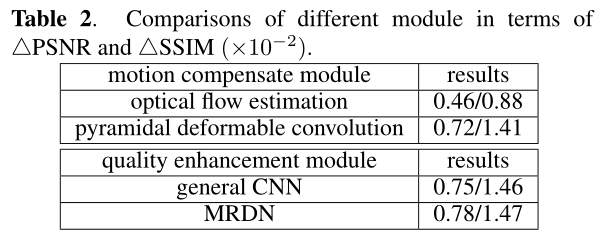
3.4. Effects of the proposed module
Effects of MC module
MC Module is the key part of multi frame strategy , In order to better understand the MC Module and proposed based on deformable convolution MC Differences between modules , We compared the effects of these two modules . We use the optical flow method and the proposed pyramid deformation convolution to train the two models , Results such as table 2 Shown . In the same training strategy and QE Under module , Use our MC The results of the module model have higher quality , It shows that pyramid deformation convolution is more reliable .
Effects of QE module:
QE The module extracts information from its input , Further enrich the details of compressed frames , Its output determines the performance of the whole model . We use universal CNN( be used for MFQE 1.0) And the proposed MRDN Train two models respectively , These models use the same settings and the same MC modular . surface 2 The evaluation results are provided . It can be seen that ,MRDN stay  PSNR and
PSNR and  SSIM The results obtained on are better than average CNN Higher . It means MRDN The residual dense connection used in makes effective use of feature information , And more than average CNN The super large receiver field used in has better performance .
SSIM The results obtained on are better than average CNN Higher . It means MRDN The residual dense connection used in makes effective use of feature information , And more than average CNN The super large receiver field used in has better performance .
4. CONCLUSION
In this paper , We propose a new multi frame network for compressed video quality enhancement , The network uses a pyramid shaped deformable structure to compensate for motion , And improve the quality of compressed frames through multi frame residual dense network . Besides , An edge enhancement loss is also designed , For powerful edge reconstruction . The model achieves the most advanced performance on the benchmark database , Model size is 1.32M, Smaller than most comparison methods . The focus of future work is to further reduce the computational complexity .
边栏推荐
- Navigation - are you sure you want to take a look at such an easy-to-use navigation framework?
- leetcode:648. Word replacement [dictionary tree board + find the shortest matching prefix among several prefixes]
- Leetcode——344. Reverse string /541 Invert string ii/151 Reverse the word / Sword finger in the string offer 58 - ii Rotate string left
- Differences between cookies and sessions
- PD virtual machine tutorial: how to set the available shortcut keys in the parallelsdesktop virtual machine?
- Cocos creator direction and angle conversion
- Similarities and differences between switches and routers
- C# 6.0 语言规范获批
- Oracle non automatic submission solution
- Electronic remote error
猜你喜欢

MicTR01 Tester 振弦采集模塊開發套件使用說明

Ian Goodfellow, the inventor of Gan, officially joined deepmind as research scientist

2022年13个UX/UI/UE最佳创意灵感网站

用于增强压缩视频质量的可变形卷积密集网络

「2022年7月」WuKong编辑器更版记录
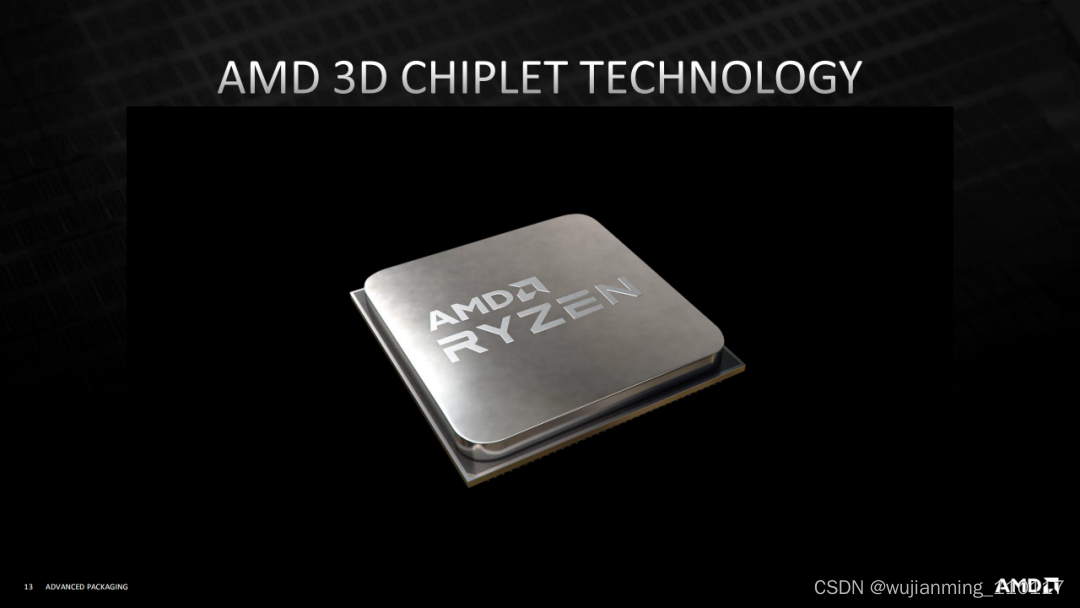
CPU与chiplet技术杂谈

CVPR2022 | 医学图像分析中基于频率注入的后门攻击
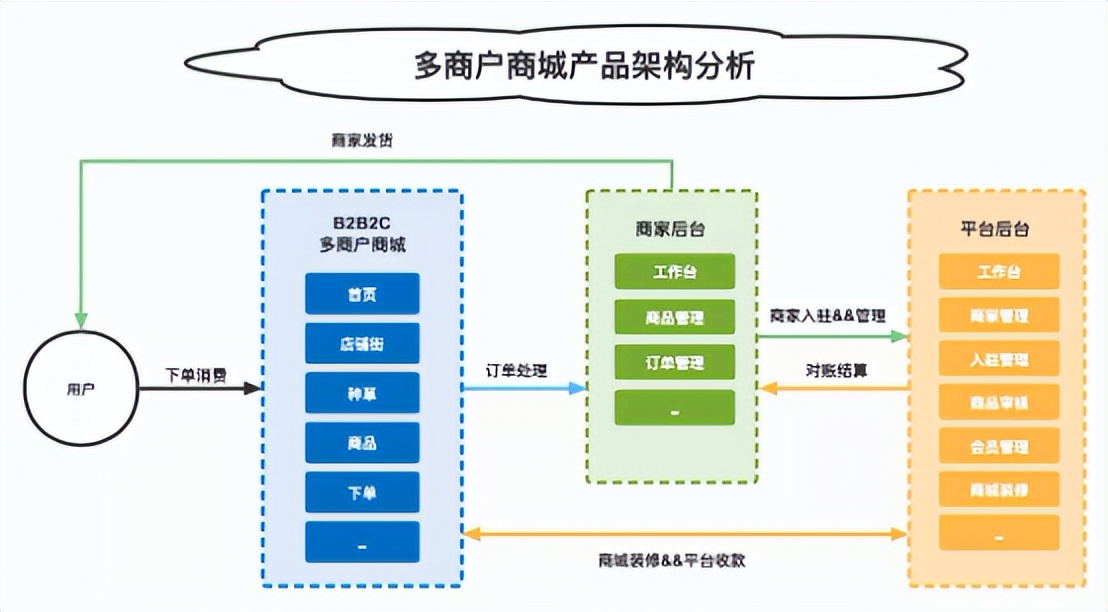
Démontage de la fonction du système multi - Merchant Mall 01 - architecture du produit
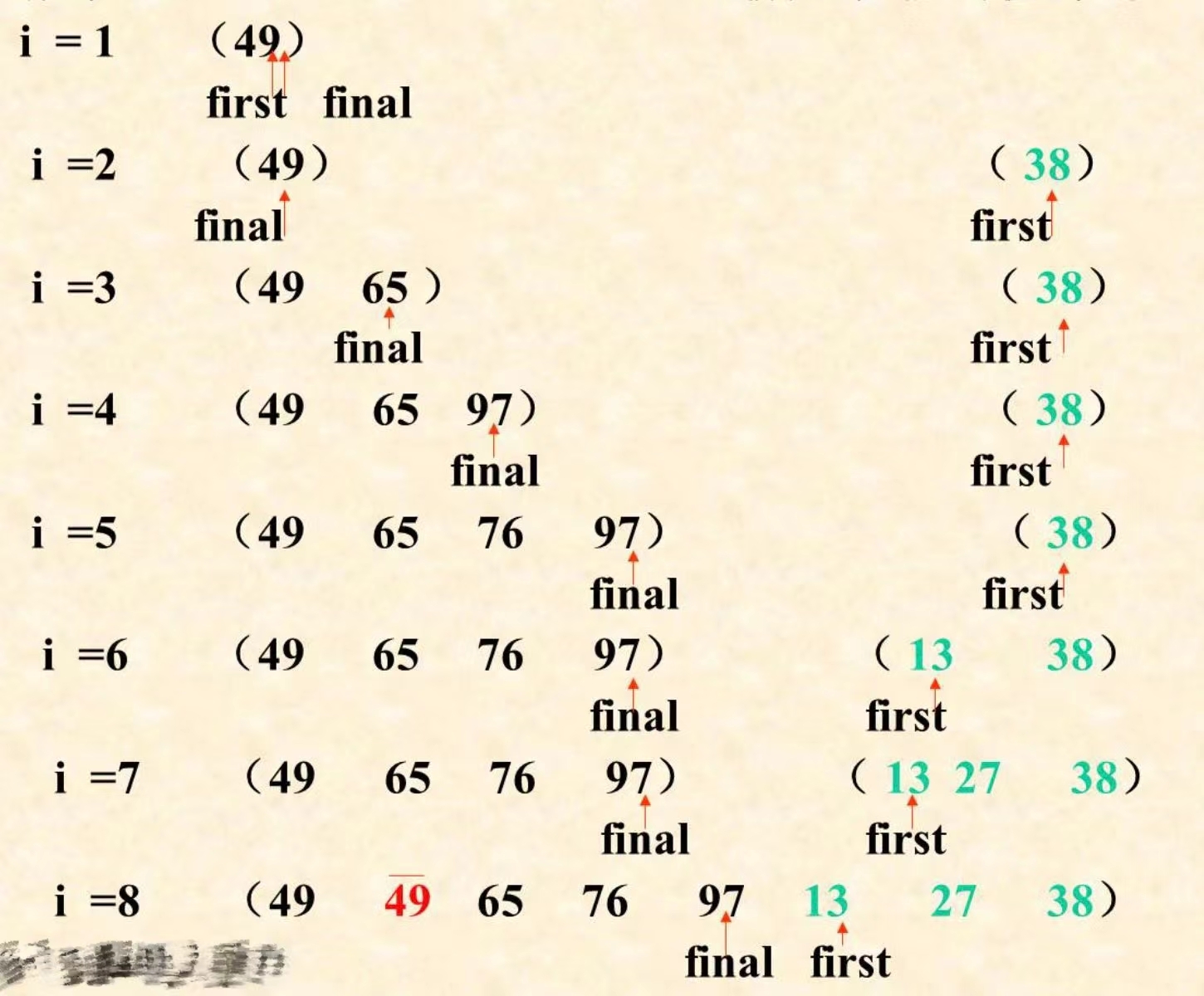
内部排序——插入排序

2022PAGC 金帆奖 | 融云荣膺「年度杰出产品技术服务商」
随机推荐
潘多拉 IOT 开发板学习(HAL 库)—— 实验12 RTC实时时钟实验(学习笔记)
Leetcode - Sword finger offer 05 Replace spaces
#yyds干货盘点# 解决名企真题:交叉线
华为云数据库DDS产品深度赋能
LeetCode每日一题(636. Exclusive Time of Functions)
13 ux/ui/ue best creative inspiration websites in 2022
拼多多败诉,砍价始终差0.9%一案宣判;微信内测同一手机号可注册两个账号功能;2022年度菲尔兹奖公布|极客头条...
JSON解析实例(Qt含源码)
Simple steps for modifying IP of sigang electronic scale
属性关键字OnDelete,Private,ReadOnly,Required
MLGO:Google AI发布工业级编译器优化机器学习框架
Leetcode——236. 二叉树的最近公共祖先
Substance Painter筆記:多顯示器且多分辨率顯示器時的設置
Navigation - are you sure you want to take a look at such an easy-to-use navigation framework?
The world's first risc-v notebook computer is on pre-sale, which is designed for the meta universe!
PLC:自动纠正数据集噪声,来洗洗数据集吧 | ICLR 2021 Spotlight
Leetcode——236. The nearest common ancestor of binary tree
In the field of software engineering, we have been doing scientific research for ten years!
安恒堡垒机如何启用Radius双因素/双因子(2FA)身份认证
Excuse me, does PTS have a good plan for database pressure measurement?